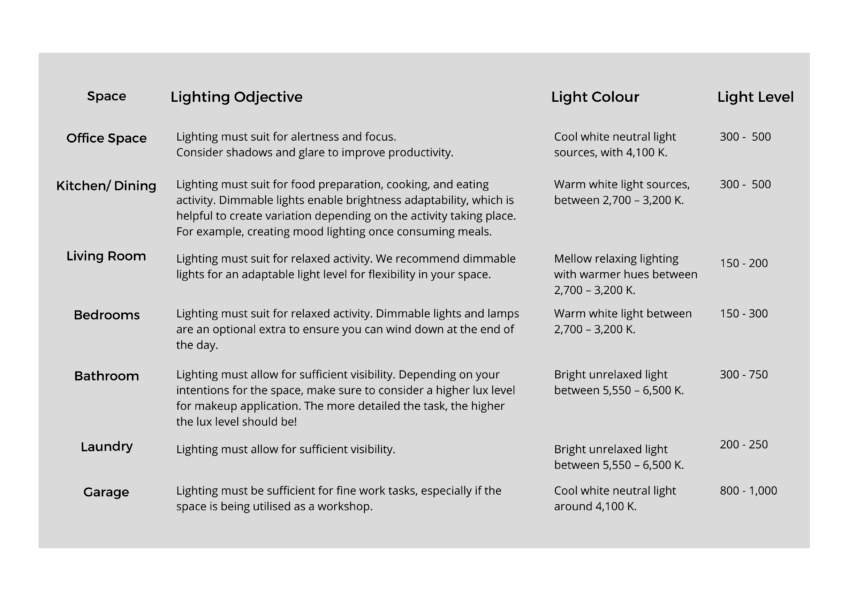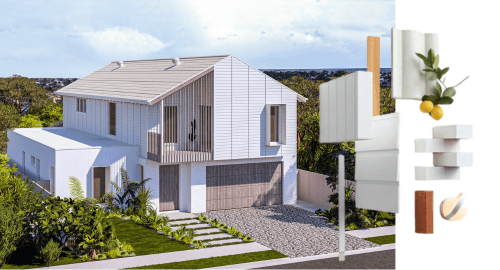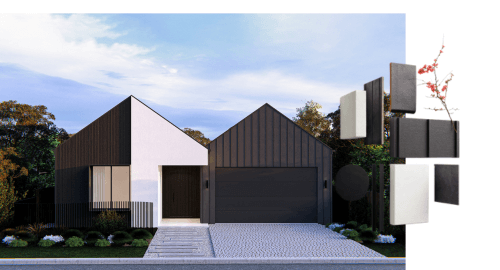When designing a home, it is often easy to neglect the smaller details that in fact have a significant impact on your design. Atria Designs aims to holistically fulfil your vision through addressing every aspect of your design, including light and lighting levels. In this article, we detail the importance of lighting, natural light, and give you tools you need to ensure your home is never dull.
Why is Lighting Important?
Lighting is an integral element to consider when designing a space, it accentuates textures, colours, and forms which bring designs to life and effect the way we perceive the home. Lighting can impact our emotions and experience of a home as it has the ability to alter perceptions and create sensations. These are important principles to consider, as it can directly correlate to the feel of the space. Perception is crucial to celebrating the dwelling’s form and size. For example, designing a space with light colours and intentional light placement can create the illusion of a bigger space. Sensations impact the way we feel in the home, lighting considerations are required to ensure the completed dwelling suits your expectations and intention for each space.
Why is Natural Lighting Important?
Natural lighting is another important consideration when designing your home. Not only does it lower your future electricity bills but is also needed to increase the light-levels of each room. With intentional window placement, your space can be transformed from dark and gloomy, to a bright and radiant dwelling. Utilising natural light in a home also has numerous benefits to individuals inhabiting the space. Exposure to sunshine can have a positive impact on an individual’s energy and happiness through the production of serotonin and endorphins. Natural lighting also provides stimulation to regulate human circadian rhythms which assists in improving sleep quality.
How is lighting measured?
Understanding how lighting is measured is important when designing your home and purchasing lights. In the table below, we detail the ideal Kelvin (K) and Light Level (Lux) for each space. Kelvin reflects the colour and temperature of the light source, which could impact how your space feels, and the functionality of the space. This can be found on the packaging of light globes, or in product descriptions if you are shopping online. In conjunction with Kelvin, Lux measures the amount of light in a space that can be perceived by the human eye. One lux is equal to one lumen per square meter. It allows us to measure the total ‘amount’ of visible light present and the intensity of the illumination on a surface. In existing spaces, this can be measured with mobile phone apps, alternatively scientific equipment. It is important to consider how bright your spaces should be based on how you are looking to utilise the room. Have a look at our tips below:
What lighting should I have in each room of my home?
It is important to consider the lighting purpose for each space within the home. The below information can provide you with the necessary tools to ensure your home is light, bright and airy.

We hope this information has helped you discover the importance of lighting and equipped you to choose the best lighting for specific spaces within your home. To find out more about ways to integrate lighting through your design, contact us today by clicking the link below.


